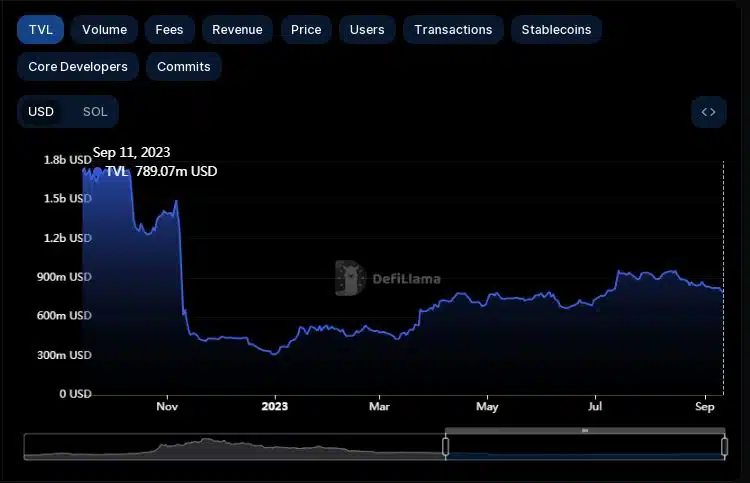Solana: Why FTX’s upcoming sell-off could threaten SOL’s position

- SOL’s user base may witness a surge considering Solana’s strategic partnership with Visa.
- FTX’s upcoming sell-offs threatened to add downward pressure to SOL.
Despite the not-so-exciting price trajectory of Solana’s native token, SOL’s ecosystem has reverberated with a flurry of positive developments lately.
Amidst the relative calmness of the bear market, the proof-of-stake (PoS) network concentrated on building high-profile partnerships. Thus, boosting its development activity and making the chain an attractive hub of decentralized finance (DeFi) protocols.
How much are 1,10,100 SOLs worth today
Popular on-chain researcher Emperor Osmo drew attention to some of the ecosystem’s important advancements in recent months and how they position Solana for long-term market value expansion.
Solana for stablecoin settlement
Arguably the most significant among them was the partnership with payment Giant Visa. The partnership involved the extension of its stablecoin settlement capabilities to the Solana chain. The Solana community widely applauded the announcement. This is because a major TradFi player considered the network for payments for the first time.
While Visa was already using Ethereum [ETH] for its pilot project, the decision to add support for Solana was motivated by the high transaction throughput and low costs. Visa acknowledged Solana’s strategic advantages while announcing the partnership.
“The Solana blockchain sees 400 millisecond block times, averages 400 transactions per second (TPS) and typically surges to more than 2K TPS1 across a variety of use cases during periods of peak demand.”
The admission was a testament to Solana’s long-held narrative of a high-performance blockchain. Because of its high transaction speeds, it has been frequently projected as the “Ethereum Killer”. In fact, a comparative data analysis by Artemis revealed that Solana was miles ahead of its competitors in facilitating on-chain transactions.
With Visa’s partnership, the numbers were expected to rise even further.
MakerDAO prefers Solana
Apart from Visa’s partnership, the Solana ecosystem was also the leading stablecoin issuing protocol MakerDAO’s preferred network. Earlier in the month, Maker’s co-founder Rune Christensen proposed to build the protocol’s upcoming stand-alone blockchain by forking Solana’s codebase.
Praising Solana’s technical capabilities, Christensen stated that the PoS network would remain the best fit to address Maker’s specific needs. He also attributed the strong developer ecosystem as a major reason behind choosing Solana.
“This means that it has significant lindy effect and is likely to stick around long term and means that the costs for development and maintenance will be much lower, and that there will always be a high quality pool of talent available for Maker to access and contribute to.”
The importance of high development activity in luring investors has been repeated ad nauseam. However, the above scenario served as another great reminder.
Specifically referring to the FTX fiasco, Christensen heaped praise on the way the ecosystem weathered the headwinds that it encountered on its way to building its developer base. His assertions were corroborated by data from Token Terminal.
It was revealed that Solana’s developer count remained intact from what it was a year at the beginning of 2023.
Happenings on Solana’s DeFi front
Emperor Osmo also emphasized Solana’s significant progress in improving its DeFi credentials. Maple Finance, one of the leading players in the real-world assets (RWA) industry, was returning to Solana months after leaving the blockchain network in the aftermath of FTX’s downfall.
Given Maple’s earlier contributions to Solana’s liquidity, the return was believed to be a win-win situation for both sides.
Apart from RWA, ample opportunities also lie in the largely untapped liquid staking token (LST) sector. While Solana boasted of one of the largest staking market caps, just about 5% of the supply was available as LSTs.
The emerging liquid staking protocol Jito was trying to capture a chunk of its market. It recorded a sharp increase in staked SOL since July.
Overall, Solana has come a long way since the cascading effect of FTX’s collapse. Its total value locked has more than doubled on a year-to-date (YTD) basis to nearly $790 million at press time, per DeFiLlama.
Realistic or not, here’s SOL’s market cap in BTC terms
Will this ruin the party?
It was evident that the Solana community had a lot to root for. Having said that, there were mounting concerns over FTX’s upcoming liquidation plan which could flood the market with additional SOL tokens.
In fact, jittery holders started to dump their holdings fearing a big crash in the days to come. The token plunged 9.4% over the past week to its press time value of $17.68.









